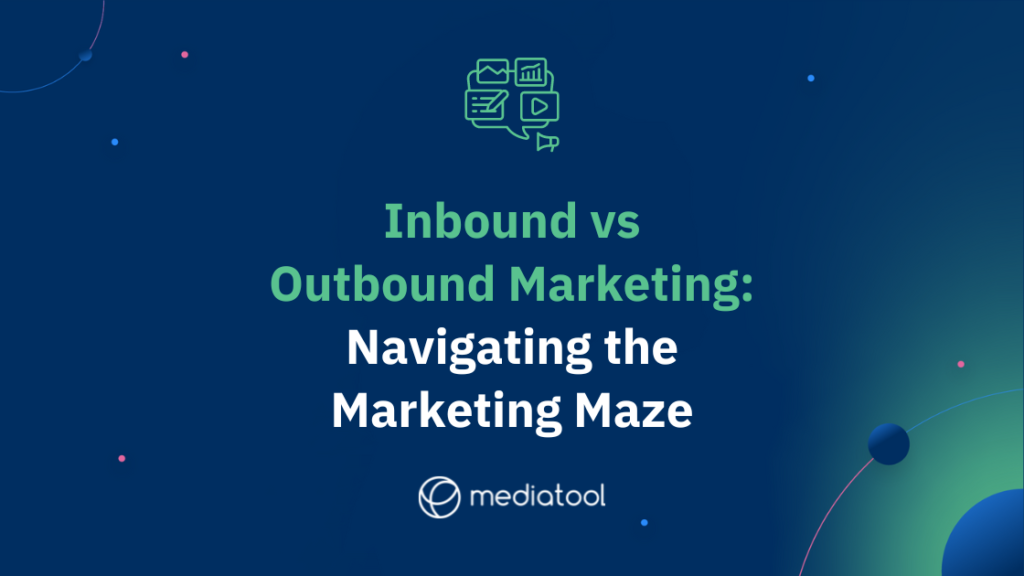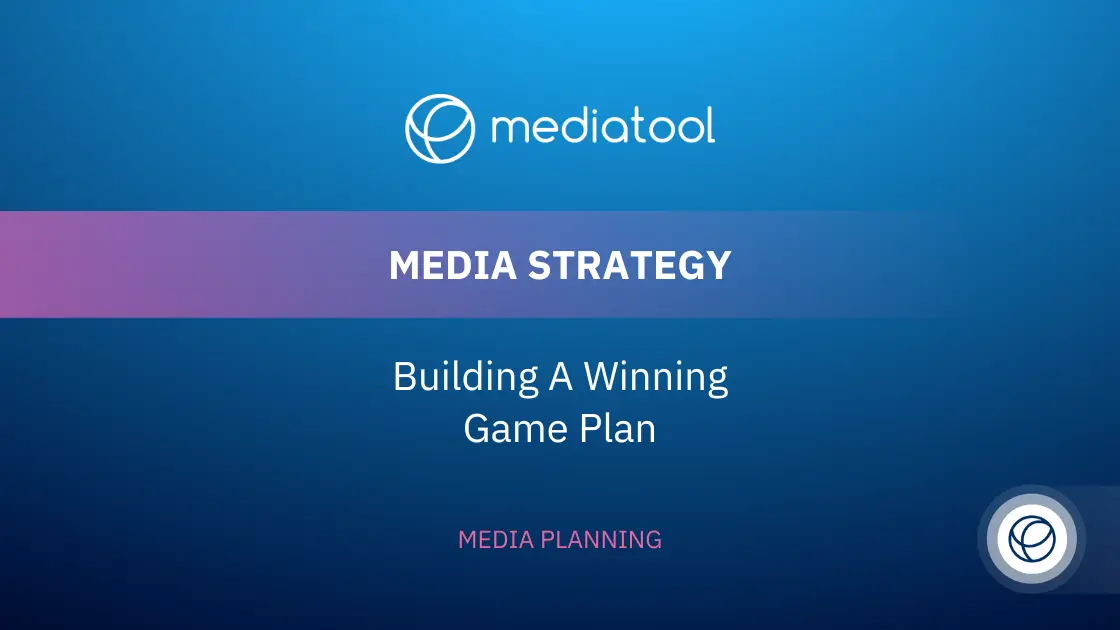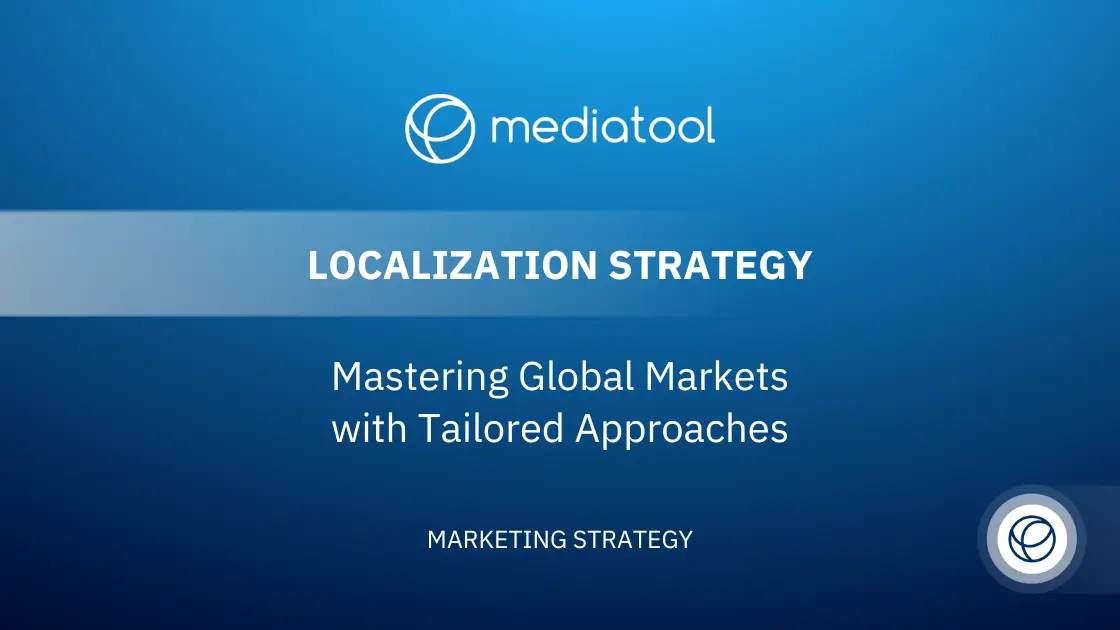Have you ever found yourself scratching your head over the differences between inbound vs outbound marketing?
If so, you’re not alone.
Understanding these two marketing approaches is crucial for every marketer looking to make the most of their campaigns.
So buckle up because we’re about to dive into the world of inbound and outbound marketing, their benefits and challenges, and how to choose the right approach for your business.
Ready to become a inbound vs outbound marketing master? Let’s get started!
Inbound Marketing – Benefits, Challenges, and Examples
Inbound marketing focuses on attracting potential customers to your brand by offering valuable content and experiences tailored to their needs and preferences. Unlike outbound marketing, which pushes a message outward, inbound marketing draws customers in with engaging content that answers their questions and addresses their pain points, playing a key role in the buyer’s journey. This marketing approach contrasts with outbound tactics like cold calling, TV ads, and direct mail.
Benefits of Inbound Marketing
Trust-Building: By providing helpful, relevant content, inbound marketing establishes your brand as an authoritative source, fostering trust and leading to more conversions and long-term customer loyalty. It establishes trust through relevant content and consistent engagement on platforms like social media and blogs.
Cost-Effectiveness: Inbound strategies often utilize low-cost or free channels such as social media posts, blogs, and search engine optimization (SEO), making it affordable for businesses of all sizes. Aids in high ROI with minimal expenditure through SEO, social media advertising, and content creation.
High-Quality Leads: It attracts potential customers actively seeking solutions, leading to better sales funnel conversions. Done by attracting leads who are already interested, using detailed blog posts and optimized landing pages.
Long-Term Growth: Efforts like SEO and content marketing (creating and publishing content) have a lasting impact on brand visibility and reputation, contributing to sustainable growth. Continuous content creation and SEO efforts enhance online presence and brand authority over time.
Challenges of Inbound Marketing
Time and Resource Intensive: Inbound marketing requires the continuous creation and maintenance of high-quality content, which demands significant time and resources. This challenge is multifaceted, involving not just content creation but also SEO optimization, social media management, and continuous updates to ensure relevancy and effectiveness.
Delayed Results: Achieving significant results from inbound marketing efforts often takes time, as these strategies focus on organic growth and nurturing long-term relationships with prospective customers. Businesses need to be patient and persistent, recognizing that this long-term investment is crucial for sustainable growth but may not yield immediate returns.
Examples of Inbound Marketing Tactics
Blog Posts: Developing an informative blog post tailored to meet the needs and interests of the target audience. This includes not just creating content but also ensuring its continuous relevance through regular updates and SEO optimization.
Social Media Engagement: Actively using platforms to share valuable content, engage with the audience, and utilize social media advertising. This involves not only posting but also interacting with followers, conducting live sessions, and continuously adapting the strategy to stay aligned with audience preferences.
Educational Resources: Offering webinars, e-books and an educational YouTube channel to showcase industry expertise. These resources should provide actionable insights and help potential customers in their buying journey, going beyond basic information sharing.
Email Marketing: Sending personalized, targeted emails, including follow-up emails, to nurture leads. Implementing segmented email marketing strategies to provide tailored experiences to different segments of the customer base.
Video Content: Producing a variety of video content for platforms like YouTube, including educational, how-to guides, and behind-the-scenes content. This approach aims to build a more engaging and personal connection with the audience.
Leveraging Inbound Marketing for Business Growth
Understanding the benefits, challenges, and examples of inbound tactics is crucial for leveraging these techniques to grow your business and build lasting customer relationships. It’s about choosing the right strategy that aligns with the marketing goals and the target audience, ensuring both immediate engagement and long-term brand loyalty.
Outbound Marketing – Benefits, Challenges, and Examples
An outbound marketing strategy, often synonymous with traditional marketing, utilizes channels like TV ads, radio, print ads, and cold calling to push a message to a broad audience. It’s an “interruptive” approach where the strategy involves vying for the audience’s attention in a competitive advertising space, contrasting with the inbound approach that focuses on drawing customers in.
Benefits of Outbound Marketing
Immediate Visibility: Outbound marketing provides quick brand visibility, which is particularly crucial for launching new products or promoting time-sensitive offers. Its ability to rapidly disseminate information makes it a valuable component of a comprehensive marketing strategy, especially when immediate market impact is a priority.
Broad Reach: Utilizing channels like TV and radio ads, outbound marketing enables businesses to reach a diverse range of target audiences. This aspect is fundamental in outbound marketing efforts, as it facilitates widespread brand awareness. It is particularly effective in markets where digital penetration is lower or when targeting demographics that are less likely to engage with digital media.
Consumer Familiarity: Many consumers are more familiar with traditional advertising formats such as print ads, billboards, and TV commercials. This familiarity can increase the receptiveness of the target audience to outbound marketing messages. In industries where traditional media still holds significant influence, this can lead to higher engagement and conversion rates.
Challenges of Outbound Marketing
High Costs: One of the primary challenges of outbound marketing is its often high expense, particularly in the case of TV and print ads. These costs can be prohibitively high for businesses with smaller marketing budgets, making it challenging to compete with larger companies that can afford extensive outbound campaigns. This high cost factor extends to other traditional mediums like radio and billboards, necessitating significant investment for effective reach and frequency.
Decreasing Effectiveness: In the digital age, the effectiveness of traditional outbound marketing tactics is on the decline. The widespread use of ad blockers, coupled with the growing preference for digital streaming services over traditional TV and radio, means that many traditional advertisements often go unseen or are actively avoided. This shift in consumer behavior requires outbound strategies to evolve and adapt to maintain relevance.
Limited Engagement: Outbound marketing is typically characterized by one-way communication, which limits the ability to engage directly with potential customers. Unlike inbound marketing, which fosters interaction and engagement through channels like social media and blogs, outbound tactics do not easily allow for customer feedback or interaction. This limitation can pose challenges in building lasting relationships and understanding the evolving needs and preferences of the target audience.
Outbound Marketing Examples
Billboards: Serve as high-visibility outdoor advertising, reaching a broad audience.
TV Commercials: Capture viewer attention during television programming, a classic example of outbound marketing strategies.
Direct Mail Campaigns: Involve sending printed materials to consumers’ mailboxes, a tactic used in both outbound and inbound marketing.
Cold Calling: Involves making unsolicited calls, a direct and often challenging outbound tactic.
Print Ads: Placed in newspapers and magazines to target specific demographics, exemplifying outbound marketing efforts.
Integrating Outbound Marketing into Your Marketing Plan
Understanding outbound marketing’s benefits and challenges is crucial for integrating these strategies into an overall marketing plan. It requires balancing between reaching potential buyers through traditional methods and adapting to the evolving landscape where content marketing, social media posts, and SEO play significant roles. By employing the right outbound marketing tactics, businesses can effectively complement their inbound efforts, ensuring a holistic approach to reaching and engaging with their target audience.
Inbound vs Outbound Marketing – Key Differences
As we’ve discussed, inbound and outbound marketing are two distinct approaches, each with its own set of benefits and challenges. To help you decide which method is best suited for your business, let’s explore the key differences between these marketing strategies:
Approach and Focus
Inbound Marketing: Centers on creating and publishing high-quality content that addresses the needs and interests of the target audience. It aims to build trust and credibility, attracting potential customers through informative blog posts, SEO, and social media posts.
Outbound Marketing: Employs tactics like TV ads, cold calling, and direct mail to broadcast a message to a wide audience. This approach seeks immediate attention and is more interruptive, focusing on generating quick interest in products or services.
Channels Used
Inbound Channels: Utilizes digital platforms such as blogs, social media advertising, and search engines for targeted and adaptable marketing efforts. These channels facilitate inbound marketers in reaching potential customers and continuously adapting to feedback and market trends.
Outbound Channels: Relies on traditional marketing mediums like television, radio, and print. Outbound tactics through these channels can achieve broad reach but may lack the precision of targeting specific customer segments.
Engagement and Interaction
Inbound Marketing: Encourages two-way communication, fostering interaction and engagement with prospective customers. This approach helps in understanding the buyer’s journey and creating content that resonates with the audience.
Outbound Marketing: Generally one-way communication, focusing on broadcasting a message to customers with limited opportunities for direct interaction or engagement.
Measurement and Adaptability
Inbound Marketing: Offers data-driven insights, making it easier for marketing teams to track and analyze campaign performance. This adaptability allows for quick adjustments based on customer feedback and search engine trends.
Outbound Marketing: Can be more challenging to measure in terms of ROI and effectiveness. Due to its reliance on traditional channels, outbound marketing strategies may require more time and resources for changes.
Targeting and Customer Acquisition
Inbound Marketing: Highly targeted, attracting qualified leads and potential buyers who are actively searching for solutions. It’s about creating relevant content and using SEO to ensure the right people find it at the right time.
Outbound Marketing: Targets a broader audience, which can be effective for new business launches or reaching best prospects but may not always align with the specific interests or needs of potential customers.
Overall Marketing Strategy
Inbound Marketing Efforts: Focus on building long-term relationships with customers, contributing to a sustainable marketing strategy.
Outbound Marketing Efforts: Can complement inbound strategies by increasing immediate visibility and reaching customers not active on digital platforms.
By understanding these differences, businesses can decide on the right strategy that suits their marketing goals, ensuring they reach their target audience effectively, whether through inbound content or outbound campaigns. Integrating both approaches can lead to a more holistic marketing plan, catering to different stages of the sales funnel and appealing to a diverse range of customers.
Inbound vs Outbound Marketing Wrap-Up
Now that you’ve gained a solid understanding of inbound and outbound marketing, it’s time to put that knowledge to good use! Here’s a simple plan to help you decide which approach is best for your business:
Define Your Marketing Goals
Inbound Focus: If your objective is to build long-term customer relationships, inbound marketing should be your primary focus. This involves creating content, optimizing for search engines, and engaging in social media advertising.
Outbound Focus: For immediate visibility, such as a new product launch, outbound marketing strategies like trade shows, cold emailing, or attention-grabbing advertisements might be more effective.
Understand Your Target Audience
Assess the likelihood of your audience responding to different marketing approaches. If they prefer helpful blog posts and informative content, lean towards inbound methodology. For audiences more receptive to direct marketing techniques, consider outbound strategies.
Evaluate Your Resources
Analyze the resources available to your sales team or marketing department. Do you have the capability for continuous content creation and maintenance required for inbound marketing, or do you have the budget to support large-scale outbound campaigns, like TV ads or cold email blasts?
Experiment and Optimize
Implement both inbound and outbound tactics, tracking the responses of prospects and existing customers. Use data to refine your strategy, focusing on what works best in attracting potential leads and retaining interested people.
Stay Informed and Adapt
Continuous learning is key. Keep up with the latest in marketing trends, especially concerning inbound marketing techniques like SEO, email marketing, and social media strategies, as well as outbound methods like direct mail and advertising campaigns. Adapting to changing consumer behaviors and market trends is crucial for marketing success.
By integrating these elements, most marketers can develop a balanced marketing strategy that caters to the buying journey of their target audience. Remember, the best companies often blend inbound and outbound tactics, ensuring they capture attention in various stages of the customer’s journey and in their own time. This holistic approach can lead to attracting more customers and achieving sustained business growth.
Looking for more ways to drive efficiency in your marketing? Take a tour of Mediatool today, to see how you can plan, manage and report on all of your marketing campaigns from a single platform.





